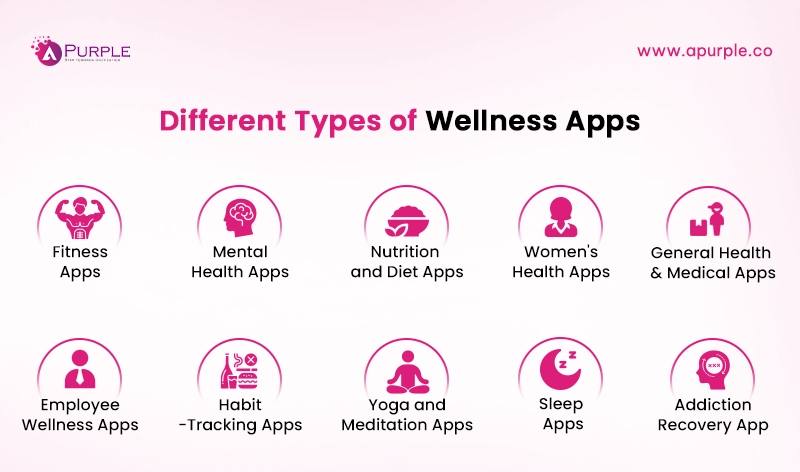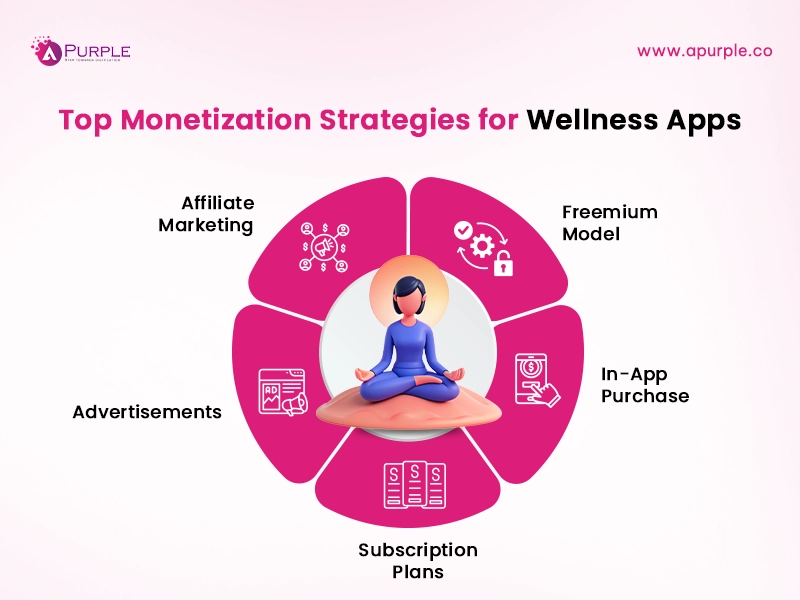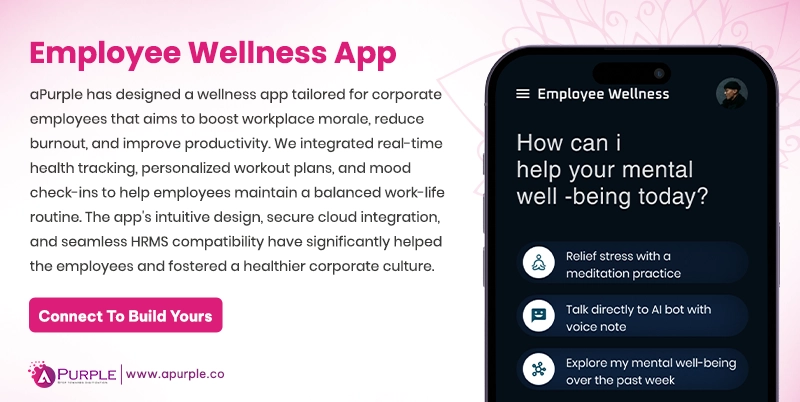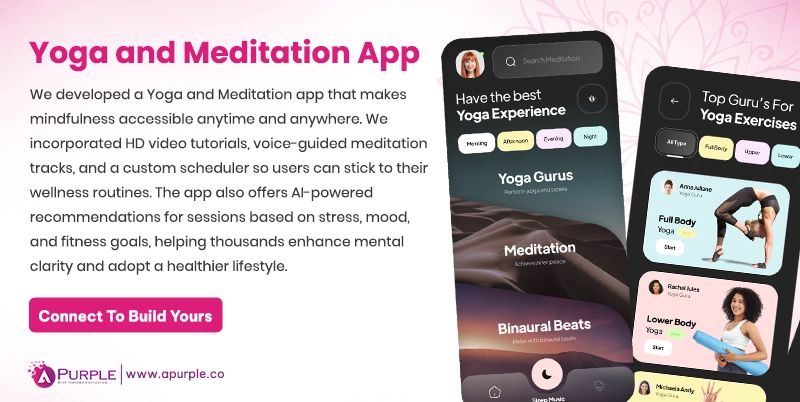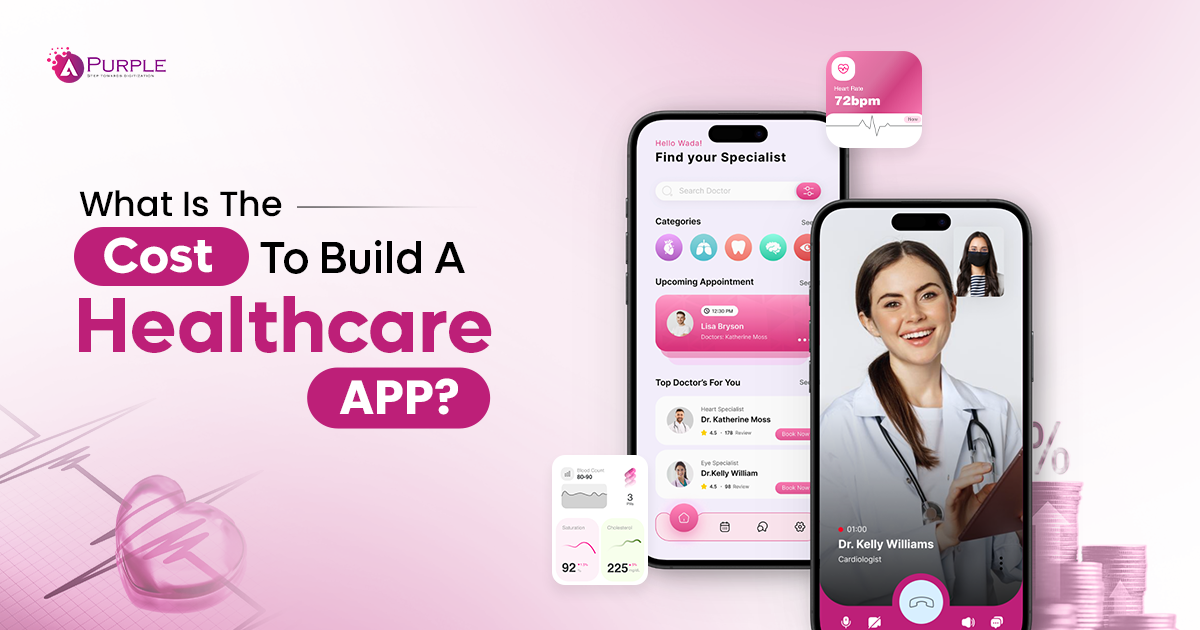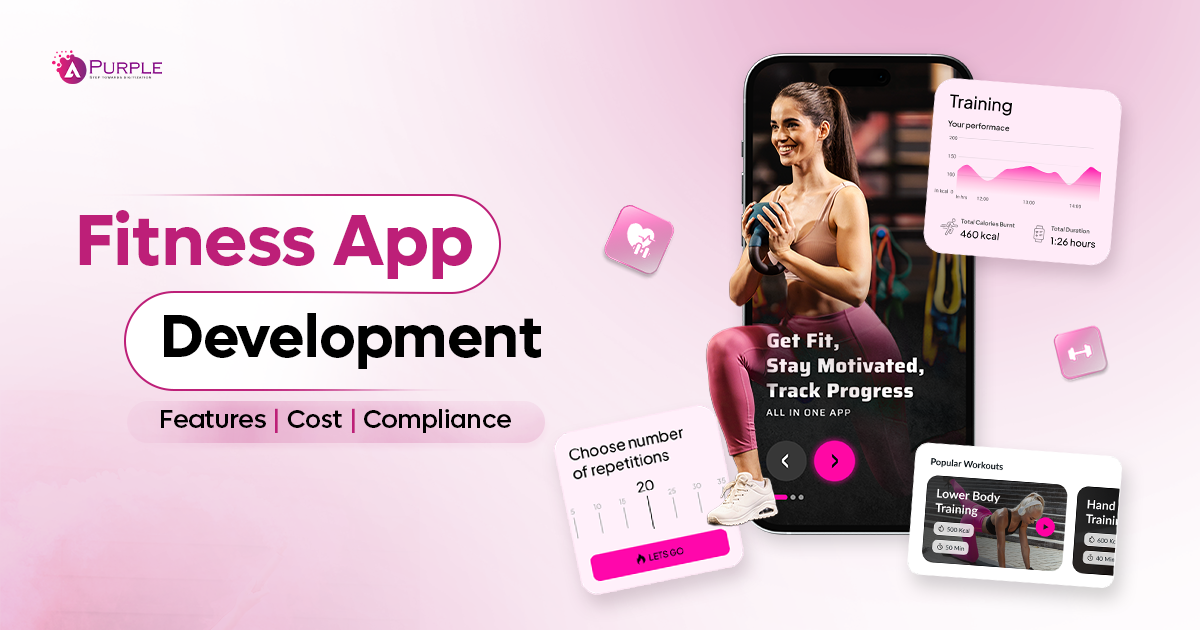
Are you thinking about launching a wellness app? Want to build a digital product that supports health goals while growing a scalable business?
If yes, then it’s time to turn your wellness app idea into a mobile application. Wellness app development is more than a trend nowadays, it’s a booming industry driven by a global transformation towards healthier lifestyles, self-care, and digital convenience. From fitness apps to guided meditation platforms and health solutions, the wellness tech market is growing with opportunities for startups ready to innovate.
But here’s the question: how can your app stand out in the App Store already packed with so many wellness apps?
This is where several startup founders we’ve come across keep getting stuck as well.
Whether you want to create a niche product, solve a wellness pain point, or explore a new digital health model, we will give you the clarity and direction to begin your wellness app development plan confidently.
- Startup founders planning to enter the health and wellness industry.
- Entrepreneurs exploring ideas for wellness-focused mobile apps.
- Healthcare professionals with a digital product vision.
- Product managers looking for partners with a wellness app development company.
What is Wellness App Development?
A process of creating digital solutions to support users in achieving their physical, mental, and emotional well-being goals. These apps, ranging from fitness apps to meditation and sleep cycle monitors, are designed to boost a healthier lifestyle through digital platforms.
This also opens opportunities in different sectors like fitness app development, women’s health, corporate wellness, and many others, for startups to enter a growing digital health market with different ideas related to wellness. So, if you are considering getting into this, it is the perfect time.
What are the Different Types of Wellness Apps?
Wellness apps come in many forms, each tailored to support different aspects of health and well-being. From physical fitness to mental health and daily habits, these apps are designed to help users lead healthier, more balanced lives.
1. Fitness Apps
Fitness apps help users track workouts, set goals, and monitor physical progress. Whether it’s personal training, gym logging, or home workouts, these apps are among the top choices in the healthcare app development segment for their consistent user engagement.
Example: Nike Training Club, MyFitnessPal, Fitbit
2. Mental Health Apps
These apps support users’ mental well-being by providing features like therapy chats, journaling, anxiety tracking, stress-management techniques, and mindfulness tools.
Example: Calm, Moodfit, Headspace
For startups looking to enter this space, exploring innovative mental health app ideas can help differentiate their offerings in this growing market.
3. Nutrition and Diet Apps
These apps help users in tracking calorie intake, planning meals, and building better eating habits. If you’re exploring healthcare business ideas, this segment offers great potential for niche features like allergy tracking or diet-based coaching.
Example: Lose It, Noom, Lifesum
4. Women’s Health Apps
Focused on menstrual cycle tracking, fertility monitoring, pregnancy care, and hormonal health, these apps cater to a highly engaged user base. A promising direction for startups in wellness application development targeting personalized care for women.
Example: BetterHelp, Natural Cycles
5. Sleep Apps
Sleep-focused wellness apps offer tools like sleep tracking, bedtime reminders, and sleep coaching. With rising awareness about sleep hygiene, these apps play a key role in holistic health.
Example: Sleep Cycle, SleepScore
6. Employee Wellness Apps
These apps promote workplace well-being by offering mental health resources, physical activity challenges, healthy lifestyle tips, and progress tracking to encourage better health habits.
7. Habit-Tracking Apps
Habit-tracking apps encourage users to build and maintain healthy habits such as drinking water, reading, or quitting smoking. For entrepreneurs exploring the self-wellness app development segment, habit trackers offer a high-impact solution.
8. Yoga and Meditation Apps
Yoga and meditation apps provide guided sessions for breathing exercises, mindfulness, stretching, and yoga practices, helping individuals relax, improve flexibility, and manage stress.
Example: Insight Timer, Pocket Yoga
9. General Health and Medical Apps
These apps focus on overall health management, offering features like symptom checkers, medication reminders, health record storage, and connectivity with healthcare providers.
Example: Teladoc Health, Apple Health
10. Addiction Recovery Apps
Addiction recovery apps assist individuals dealing with substance dependence by offering tracking tools, community support, daily check-ins, and motivational content. This represents a significant area within wellness business ideas, addressing both behavioral health and well-being.
Example: I am Sober, Sober Sidekick
What are the Steps Involved in the Development of Wellness Apps?
Understanding how to develop a wellness app is very important. It is a process that combines user research, feature planning, designing, testing, and post-launch improvements. Below is the detailed roadmap to help you develop a wellness app that delivers real value to its users.
Step 1: Define Your Goals & Target Audience
The first step in building a wellness app is knowing for whom you are creating the app. Different users have different wellness goals. Some might meditate daily, while others track workouts, nutrition, or sleep. Your app should offer solutions tailored to those needs.
- What type of wellness does my app focus on?
- What demographic am I targeting?
- What are their existing pain points and daily habits?
Creating user personas at this stage helps guide your design, content, and features in the right direction.
Step 2: Conduct Market & Competitor Research
Conducting comprehensive market research is an important step in developing your wellness app. This will help you understand current trends, identify gaps in the market, and validate your app idea. By analyzing your competitors, you can learn what they offer and understand the key factors contributing to their success. Gaining insights into wellness app development and the industry is essential, as it will help you avoid common startup mistakes when launching your wellness app.
Start by looking at popular competitors like Calm, Headspace, MyFitnessPal, or Flo. When studying these apps, find the answers to these questions:
- Why are these apps so popular among their targeted niche?
- What features could be improved or added?
- How do users feel about them based on reviews and ratings?
- What important things should be considered while developing a wellness app?
Above are some important things you should remember while doing the research. If you are unsure how to analyze the market effectively, working with a startup consulting service provider can help refine your strategy and identify opportunities before investing in development.
Step 3: Finalize the Type of Wellness App
Wellness apps come in various forms, so choosing your niche early saves time, effort, and costs during development. Defining your app type helps determine essential features, the tech stack, and UI/UX design.
The type of wellness app you choose will define compliance needs, especially if handling sensitive health data or integrating with healthcare services like telemedicine app development. Similarly, if your goal is to support workplace well-being. In that case, you might explore corporate wellness app development, which focuses on important features for employees’ mental and physical health.
Step 4: Define Core Features for User Engagement
Once you have finalized your concept, the next step is deciding which features will make it useful and engaging. The right feature set will keep the users coming back while setting your wellness app apart from the competition. Aim for functions that reflect your target audience’s needs.
| Essential Features | Unique Features | Advanced Features |
|---|---|---|
| User onboarding & profile customization | AI-based health insights | AR/VR Guided Sessions |
| Activity tracking | Advanced Wearable Integration | Real-Time Expert Consultation |
| Reminders and push notifications | Chatbots | Predictive Health Alerts |
| Personalized recommendations | AI-powered personalization | Cross Platform Sync |
| Progress reports & analytics | Voice-enabled guidance | Telemedicine Integration |
| In-app content | Mood tracking with journaling | Gamified Challenges with Rewards |
Adding too many irrelevant options can overwhelm users. Instead, create a thoughtful feature roadmap based on your audience research, app type, and overall business goals.
Step 5: Choose the Right Tech Stack & Development Approach
The next step is choosing the right tech stack for your wellness app development. Your choice of technology will directly influence its performance, scalability, and user experience. The right tech stack ensures your app can handle real-time tracking, process sensitive health data securely, and run smoothly across multiple platforms.
Start by deciding whether you want to go with native app development or hybrid app development to reach both iOS and Android users with a single codebase.
| Frontend | Flutter or React Native, Swift, Kotlin |
| Backend | Node.js, Django, or Firebase |
| Database | MongoDB or PostgreSQL |
| Security Layers | End-to-end encryption, OAuth 2.0 |
| Wearable Integration | Apple HealthKit, Google Fit, Fitbit SDK, or Garmin Connect |
Expert Advice: You can also consider integrating AI and machine learning for personalized recommendations, and cloud services like AWS or Google Cloud for better scalability.
If you’re not sure where to start? It is wise to hire top developers with expertise in wellness and healthcare domains. This ensures the app is feature-rich and compliant with data security standards like HIPAA or GDPR.
Step 6: Focus on UI/UX Design and User Experience
Another thing to focus on during the development process is creating a user-friendly UI/UX design. It plays a huge role in user retention during wellness mobile app development because it directly impacts motivation, ease of use, and emotional connection. The goal is to create a calming, intuitive, and inspiring interface.
A thoughtfully designed UI/UX improves usability and strengthens the emotional bond between the user and your app, turning casual users into loyal advocates.
Step 7: Build, Test, and Iterate Your App
Once your features and design are finalized, it’s time to start custom wellness app development. Start with MVP development, which will give you a simplified version of your app that contains only the core features necessary tos olve the user’s problem. Working with experienced wellness app developers or opting for a professional MVP development services provider can help you launch faster.
Key testing areas to focus on:
- Usability testing
- Performance testing
- Data security checks
- Device & platform compatibility
Testing should not be a one-time activity; quality assurance must be continuous during and after launch to ensure your app runs smoothly and meets evolving user needs.
Step 8: Launch, Market, and Maintain
Once your app is ready, launch it on platforms such as the App Store and Google Play. However, keep in mind that launching is only the beginning. It’s important to develop a marketing plan to promote your app.
After the launch, monitor analytics and gather user feedback to understand how your app is performing. Regular updates, new content, and bug fixes are crucial for keeping users engaged. If you’re a new business, consider partnering with a startup consulting service to help develop an effective go-to-market strategy specifically for the wellness industry.
By following these steps, you’ll understand how to develop a wellness app and position your app for long-term success in a market that thrives on consistency, personalization, and trust.
How Much Does It Cost to Build a Wellness App?
One of the questions most startup founders ask is, “How much does it cost to develop a wellness app?” The truth is, there is no fixed figure; the final price depends on multiple factors, including the app’s complexity, features, chosen tech stack, and the development team’s expertise.
On average, a basic wellness app with essential features may cost between USD 12,000 to USD 25,000+, whereas a moderately complex to advanced wellness app can range between USD 30,000 to USD 160,000+.
If you want to launch quickly and validate your idea with real users, you can go with MVP development. The MVP development cost for wellness apps typically ranges between USD 8,000 and USD 15,000+.
Below is an estimated cost breakdown for different development stages:
| Development Stage | Basic Wellness App | Moderate to Complex Wellness App |
|---|---|---|
| Planning & Discovery | USD 1,500 to USD 3,000+ | USD 3,000 to USD 8,000+ |
| UI/UX Design | USD 2,000 to USD 4,000+ | USD 5,000 to USD 15,000+ |
| Frontend Development | USD 3,000 to USD 6,000+ | USD 10,000 to USD 40,000+ |
| Backend Development | USD 3,000 to USD 5,000+ | USD 8,000 to USD 50,000+ |
| Testing & QA | USD 1,000 to USD 2,500+ | USD 4,000 to USD 15,000+ |
| Total Cost | USD 12,000 to USD 25,000+ | USD 30,000 to USD 160,000+ |
What are the Strategies to Optimize Your Budget?
Building a high-quality wellness app doesn’t always mean stretching your budget to its limits. You can control costs while delivering an exceptional product with the right approach. Here are some practical ways to make the most of your investment:
1. Start with a Low-Cost Prototype Before the MVP
Instead of jumping straight into full development, create a prototype first. This simple, no-code version of your app showcases the basic screens and flow. It helps you test your concept, gather feedback, and refine your idea before you commit to building the MVP. By validating early, you’ll avoid spending money on features your audience may not even need.
2. Use Pre-Built and Reusable Components
If your app requires features like secure messaging, appointment scheduling, or video calls, look for ready-made, compliant modules instead of developing them from scratch. These pre-built solutions are already tested, safe, and cost-effective, saving time and money while ensuring reliability.
3. Go for Cross-Platform Development
Using frameworks like Flutter or React Native allows you to create one codebase that works on iOS and Android. This approach significantly reduces development hours and ensures users get a consistent experience, no matter the device.
4. Work with Skilled Developers from the Start
It is observed that partnering with experienced wellness app developers ensures that potential issues are caught early, the codebase is clean, and your app meets industry standards from day one.
5. Don’t Forget Post-Launch Costs
It is seen that many startups plan for development but forget about ongoing expenses like app maintenance, bug fixes, security updates, and new feature additions. Including these in your budget from the beginning helps you avoid sudden financial strain after launch.
What are the Top Monetization Strategies for Wellness Apps?
Here is a list of the most common monetization strategies used by successful wellness apps. Read this for complete insights on custom wellness app development.
1. Freemium Model
This model offers core features like basic workouts, meditation sessions, or habit tracking for free, while charging for premium perks such as personalized plans, exclusive content, or progress analytics.
2. In-App Purchases
Sell add-ons like guided program bundles, nutrition plans, exclusive workout challenges, or virtual wellness workshops that users can buy directly inside the app.
3. Subscription Plans
A popular model for fitness and mental wellness apps. Offer monthly or yearly memberships that unlock unlimited access to premium content, 1-on-1 coaching, or advanced tracking features.
4. Advertisements
Partner with wellness brands, nutrition companies, or fitness equipment providers to display targeted ads that align with your audience’s lifestyle and goals.
5. Affiliate Marketing
Collaborate with health product brands, telemedicine platforms, or corporate wellness providers, and earn commissions when users purchase through your app’s recommendations.
What are the Common Challenges in Building a Wellness App?
Creating a wellness app can be challenging. Some of the common problems include integration with health systems, data privacy and regulations, scalability, integration with wearable devices, and many others. Below, we have mentioned some of the major challenges with their solutions that we have experienced during the wellness app development process.
Connecting with Health Systems
The most common challenge during wellness app development is that many hospitals and clinics use different or outdated systems, making it difficult to share and sync health data.
To overcome this challenge, widely adopted healthcare standards such as FHIR (Fast Healthcare Interoperability Resources, a modern standard for exchanging healthcare data via APIs) and HL7 (Health Level Seven, a set of rules for structuring and sharing medical information) need to be implemented. Furthermore, tools must be created to connect outdated and modern systems, and data should be thoroughly verified to avoid errors.
Ensuring Data Privacy
Another major challenge is maintaining data privacy. Wellness apps often handle users’ personal and health information, which is protected by strict laws like HIPAA and GDPR. Failing to comply can lead to fines, loss of user trust, and legal consequences.
To avoid these, use end-to-end encryption for data storage and sharing, add two-factor authentication, communicate with users about how their data will be used, and run regular security checks.
App Scalability
Another important challenge that you may face is the app’s scalability. For example, if your app suddenly gets a lot of new users, it may slow down or even crash if it is not built to handle growth.
The solution to that is to use a microservice architecture so each part of your app can grow separately, store the data on cloud platforms for flexibility, and monitor the performance so you can fix the problems before the users are affected.
Wearables Friendly
In this era of wearables, it is important that your wellness mobile app smoothly works with different devices like Fitbit, Apple Watch, or Garmin.
For smooth integration, use official APIs, test your app on multiple devices, and plan for regular updates.
User Engagement
Another challenge is user engagement; sometimes, it happens that people download the app but stop using it after a short time if they feel the app is boring and hard to use.
To overcome this challenge, the perfect solution is to keep the app interface simple, offer personalized recommendations, add different challenges or rewards, and gather feedback to improve the experience.
Pro Tip: Plan scalability, security, and integration from the initial step. Designing for these needs early is easier and cheaper than fixing issues later.
aPurple – Wellness App Case Study
At aPurple, we have developed different types of wellness apps depending upon the specific needs and requirements of our clients. We offer solutions ranging from simple to complex platforms and even MVP versions. Below, we have shared some case studies showcasing how we transformed ideas into digital products.
Wrapping Up
Developing a wellness app requires in-depth planning, understanding user needs, and focusing on technical details. By following each step of the process—ideation, design, development, testing, and launching you can create a wellness app that truly supports healthy habits and improves lives.
Whether you are wondering how to create a wellness app for meditation, emotional well-being, or daily habit tracking, partnering with a dedicated wellness app developer team like aPurple will make your journey easier and more successful. Always remember that building a wellness app is more than technology; it is about positively impacting users’ lives. Start your development with a clear goal, a people-first approach, and a dedicated team.
Frequently Asked Questions

